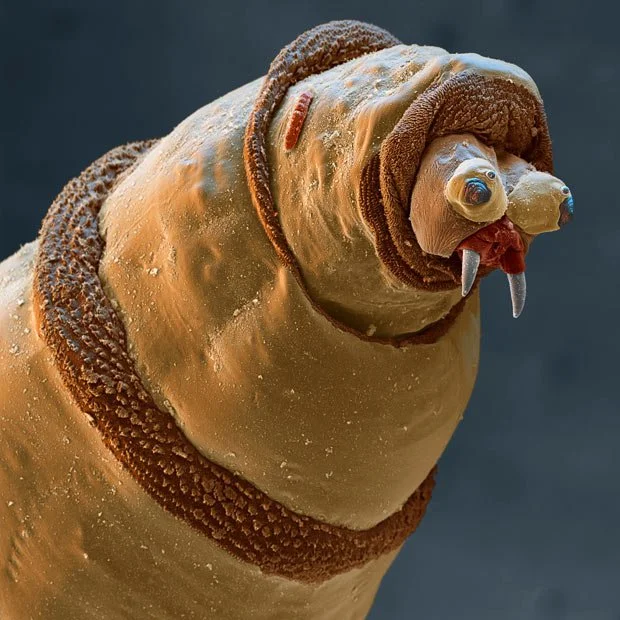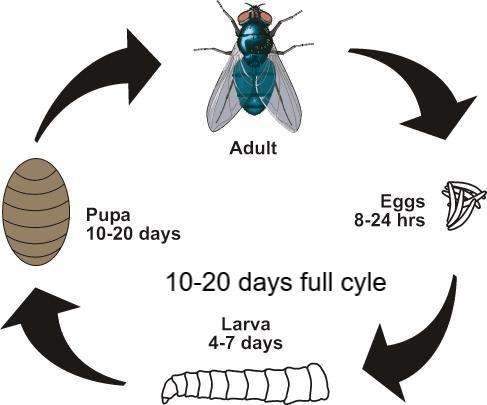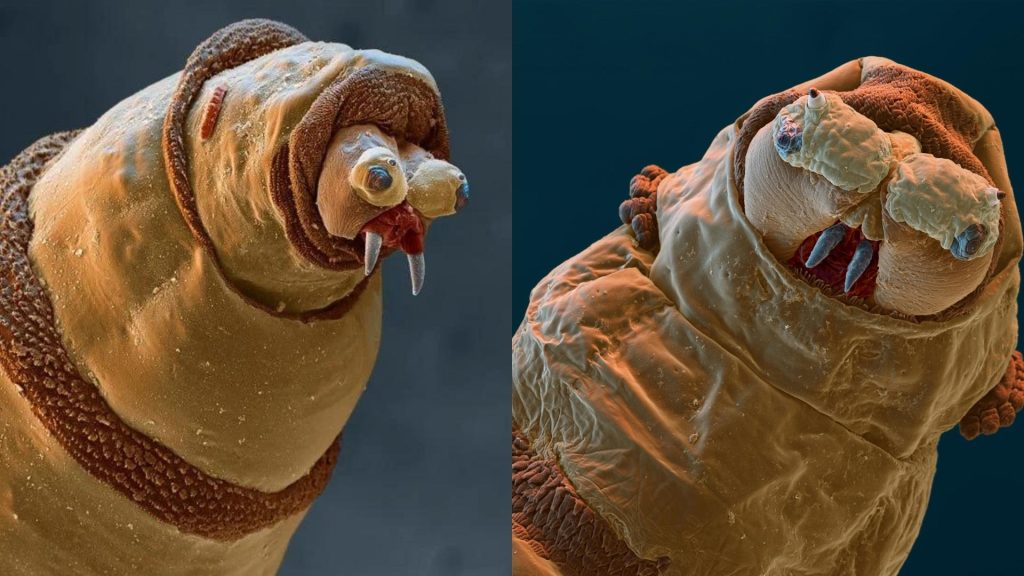Bluebottle flies, scientifically known as Calliphora vomitoria, and bluebottle fly maggot are common insects found in various parts of the world. These flies are often associated with decomposing organic matter and can be a nuisance in homes and outdoor environments. In this article, we will explore the life cycle of the bluebottle fly, its habitat and behavior, medical and ecological significance, as well as prevention and control methods.
What is a Bluebottle Fly?

Bluebottle flies, also called blow flies or bottle flies, belong to the family Calliphoridae. They are medium-sized flies with metallic blue or green bodies, measuring around 8-14 mm in length. These flies are known for their buzzing flight and are attracted to decaying organic material, such as dead animals, garbage, and feces.
Life Cycle of a Bluebottle Fly

The life cycle of a bluebottle fly is a fascinating process that showcases the remarkable transformation these insects undergo. From tiny eggs to voracious maggots and finally, adult flies, each stage serves a specific purpose in their reproductive journey. Understanding this life cycle can provide valuable insights into the behavior and habits of bluebottle flies, enabling better control and management strategies to mitigate their impact on our surroundings. In this section, we will delve into the intricate details of each stage, shedding light on the development and growth of these remarkable insects.
Stage 1: Egg
The life cycle begins when a female bluebottle fly lays her eggs on suitable food sources. The eggs are typically white or cream-colored and are usually laid in batches of around 100-300 eggs. The eggs hatch within a few hours, and the tiny larvae emerge.
Stage 2: Larva (Bluebottle Fly Maggot)
Once hatched, the bluebottle fly larvae, known as maggots, actively feed on the organic matter. The maggots are legless, elongated, and cylindrical in shape, with a pointed head and a series of segments. They go through several instars, molting between each stage to accommodate their growth. The feeding stage can last for several days or weeks, depending on the availability of food.
Stage 3: Pupa
When the maggots have reached their full size, they leave their food source and find a suitable place to pupate. The pupa is the non-feeding and inactive stage of the bluebottle fly’s life cycle. Inside the puparium, a protective case formed by the last larval skin, the maggots transform into pupae. This transformation process takes about a week, during which the pupae undergo significant changes and develop into adult flies.
Stage 4: Adult
After completing the pupal stage, adult bluebottle flies emerge from the puparium. The newly emerged flies are soft and pale, but they quickly darken and harden as their exoskeletons dry. The adult flies are sexually mature and ready to reproduce. They feed on sugary substances like nectar, fruits, and plant juices. The lifespan of an adult bluebottle fly varies, but it generally ranges from a few weeks to a couple of months.
Habitat and Behavior
Bluebottle flies are adaptable insects that can be found in a wide range of environments. They are commonly seen in urban areas, rural landscapes, and even natural habitats. These flies are attracted to decaying organic matter and can often be found near garbage bins, compost piles, animal carcasses, and other sources of food.
Preferred Environments
Bluebottle flies thrive in warm and humid conditions. They are most active during the summer months when temperatures are favorable for their development. Areas with decomposing matter, such as unattended trash, open wounds, or spoiled food, provide suitable breeding grounds for these flies.
Feeding Behavior
Adult bluebottle flies primarily feed on nectar, plant juices, and other sugary substances. However, the larvae, or maggots, are scavengers and play a vital role in the decomposition process. They feed on decaying organic matter, breaking it down and aiding in its decomposition. This behavior makes bluebottle flies ecologically significant, as they contribute to nutrient recycling in ecosystems.
Medical and Ecological Significance of the Bluebottle Fly Maggot
Bluebottle flies hold significant medical and ecological importance, playing essential roles in various aspects of our lives and ecosystems. From aiding forensic investigations to contributing to the natural decomposition process, their impact extends beyond our immediate perception. Understanding the medical and ecological significance of bluebottle flies allows us to appreciate their intricate connections with the world around us. In this section, we will explore how these flies have become valuable tools in forensic entomology and examine their crucial role in nutrient recycling and ecological balance. By recognizing their importance, we can develop effective strategies to coexist with these insects while minimizing any potential risks they may pose.
Forensic Entomology
In forensic entomology, the study of insects in legal investigations, bluebottle flies can be useful indicators for estimating the time of death. Forensic scientists analyze the life cycle stages of these flies found on human remains to determine the postmortem interval, providing crucial evidence in criminal cases.
Role in Decomposition
Bluebottle fly maggots are important agents in the decomposition process. They help break down organic matter, including carcasses and waste materials, accelerating the recycling of nutrients in the environment. Without these flies, the natural cycle of decomposition would be slower, leading to the accumulation of organic material.
Prevention and Control
To prevent bluebottle fly infestations and minimize their presence, it is essential to follow good sanitation practices and implement effective control methods.
Identifying Infestations of Bluebottle Fly Maggot
Early identification of bluebottle fly infestations is crucial for prompt action. Look for signs such as the presence of adult flies, bluebottle fly maggot, or pupae near potential breeding sites. Common breeding areas include trash cans, pet waste, decaying animal matter, and areas with poor waste management.
Effective Control Methods
To control bluebottle flies, it is important to eliminate or manage their breeding sources. This can be achieved through proper waste management, including tightly sealed garbage bins, prompt removal of animal carcasses, and regular cleaning of areas prone to organic material accumulation. Insecticides and fly traps can also be used as supplementary control measures.
Conclusion
Bluebottle flies, with their distinctive metallic appearance and active role in decomposition, are fascinating insects. Understanding their life cycle, habitat, and behavior is key to managing and controlling their presence effectively. By practicing good sanitation practices and implementing targeted control methods, we can minimize the impact of bluebottle fly infestations in our surroundings.




Your place is valueble for me. Thanks!?
Thanks for the several tips contributed on this site. I have realized that many insurance firms offer shoppers generous savings if they opt to insure more and more cars with them. A significant variety of households possess several cars or trucks these days, particularly people with old teenage young children still located at home, along with the savings for policies might soon begin. So it is good to look for a good deal.
Wow! This could be one particular of the most useful blogs We’ve ever arrive across on this subject. Basically Wonderful. I’m also an expert in this topic so I can understand your hard work.
semaglutide medication